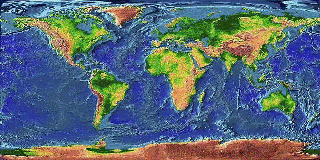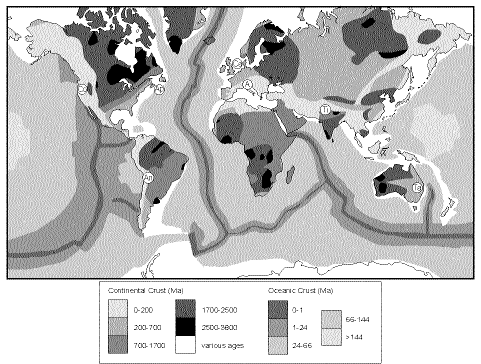An Introduction to Structural Geology and Tectonics
|
An Introduction to Structural Geology and Tectonics |
19. Perspectives of Regional Geology -- Essays
 In
Chapters 14 through 18, we have introduced you to the great variety of
tectonic settings in which deformation occurs. To put deformation in context,
we have not limited the discussion to structural features of these environments,
but we also used basic information concerning petrologic and sedimentological
features that accompany deformation. Most of our discussion focused on
what happens at the three basic types of plate margins, in response to
plate interaction, ranging from what happens during the inception of a
divergent margin (rifting) to the death of a convergent margin (collision
± strike-slip). Tectonism that occurs in these various settings
is dramatic, and results in belts of deformation, metamorphism and igneous
activity. These belts are known as orogens, and the processes that create
them comprise orogeny. Much of what is known about the plate tectonic processes
comes from study of Mesozoic and Cenozoic plate margins, rifts and collision
zones. Plate interactions, however, leave a permanent scar in the lithosphere,
even long after the associated topography has eroded away, and thus through
field study we are able to get a fairly thorough understanding of ancient
plate tectonic events in our planet's history (Figure 19.1.1). We feel
that to understand the nature and consequences of plate tectonic processes,
including orogeny, it is best to study natural examples. Thus, we devote
the final chapter of this book to case studies of important deformation
belts. Each case study is written by an expert, in his or her own style,
so that you will get a flavor of how different geologists think and approach
tectonics. When you talk with such seasoned geologists, chances are that
they show great excitement about the area in which they work or have worked.
This may stem from discovering key outcrops for understanding regional
deformation or maybe new insights into an aspect of fundamental significance
for crustal evolution. We have tried to capture some of this excitement
in the essays, as opposed to offering comprehensive review papers. When
you collect additional reading material on these and other areas, you will
rapidly learn that views vary and, sometimes, that they contradict. The
data, of course, stand, but interpretation always remains open to alternative
views, which is especially the case for regional tectonics. You will find
that the essays emphasize the large scale, yet the scenarios are generally
based on smaller scale observations. This interaction follows the approach
we have taken throughout the book: observations on different scales are
not separate and unrelated entities; rather, they form part of an integrated
framework to study the deformation of rocks and regions.
In
Chapters 14 through 18, we have introduced you to the great variety of
tectonic settings in which deformation occurs. To put deformation in context,
we have not limited the discussion to structural features of these environments,
but we also used basic information concerning petrologic and sedimentological
features that accompany deformation. Most of our discussion focused on
what happens at the three basic types of plate margins, in response to
plate interaction, ranging from what happens during the inception of a
divergent margin (rifting) to the death of a convergent margin (collision
± strike-slip). Tectonism that occurs in these various settings
is dramatic, and results in belts of deformation, metamorphism and igneous
activity. These belts are known as orogens, and the processes that create
them comprise orogeny. Much of what is known about the plate tectonic processes
comes from study of Mesozoic and Cenozoic plate margins, rifts and collision
zones. Plate interactions, however, leave a permanent scar in the lithosphere,
even long after the associated topography has eroded away, and thus through
field study we are able to get a fairly thorough understanding of ancient
plate tectonic events in our planet's history (Figure 19.1.1). We feel
that to understand the nature and consequences of plate tectonic processes,
including orogeny, it is best to study natural examples. Thus, we devote
the final chapter of this book to case studies of important deformation
belts. Each case study is written by an expert, in his or her own style,
so that you will get a flavor of how different geologists think and approach
tectonics. When you talk with such seasoned geologists, chances are that
they show great excitement about the area in which they work or have worked.
This may stem from discovering key outcrops for understanding regional
deformation or maybe new insights into an aspect of fundamental significance
for crustal evolution. We have tried to capture some of this excitement
in the essays, as opposed to offering comprehensive review papers. When
you collect additional reading material on these and other areas, you will
rapidly learn that views vary and, sometimes, that they contradict. The
data, of course, stand, but interpretation always remains open to alternative
views, which is especially the case for regional tectonics. You will find
that the essays emphasize the large scale, yet the scenarios are generally
based on smaller scale observations. This interaction follows the approach
we have taken throughout the book: observations on different scales are
not separate and unrelated entities; rather, they form part of an integrated
framework to study the deformation of rocks and regions.

Figure 19.1